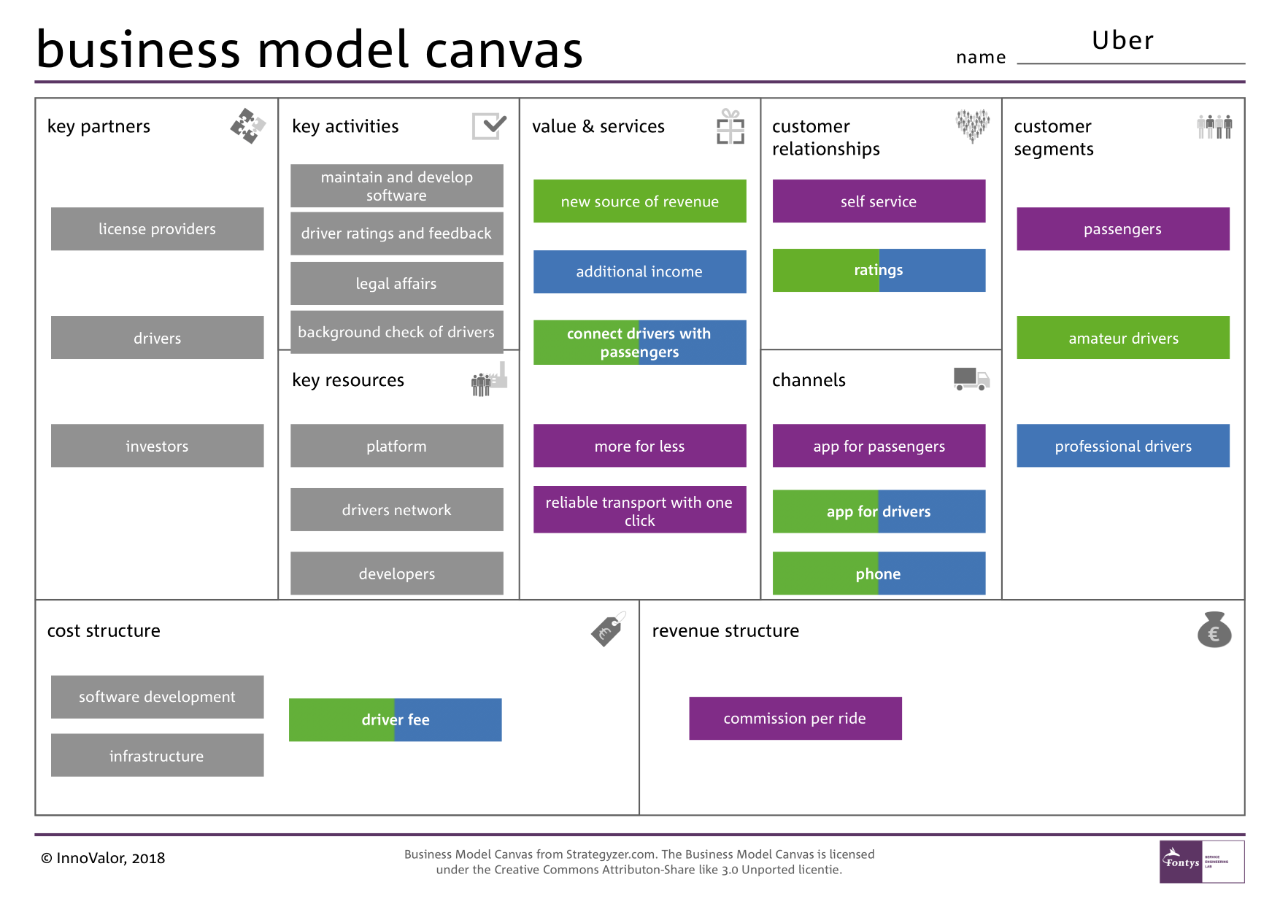Business Model Canvas

Tips for use
You can design a business model canvas by yourself but it is more effective if done by a group of people, for example with colleagues or domain experts.
Make a large print of the Business Model Canvas template to use in a brainstorm. Use sticky notes to add items to your printed Business Model Canvas, in this way you can easily change something or place an item in another block.
Get inspired by the example from Uber and learn from the practical application of the Business Model Canvas.
How to use
The Business Model Canvas consists of nine basic building blocks. These blocks reflect the different parts of your company. Create your business model by completing the building blocks in the following order:
Customer Segments
Define the different groups of people or organisations you aim to reach and serve.
- Who will buy your products or services?
- Are the target customers companies or consumers?
- What are the most important characteristics of your customers?
Value & Services
Describe the products or services that create value for your customers.
- What products or services do you sell?
- What customer problem or need do you solve?
- Why would a customer buy your product or service?
Channels
Determine how you reach your customers to deliver the value.
- Which communication, distribution and sales channels are used?
- Which sales channels does your company use to reach customers?
- What channels do you use to deliver your products or services to your customers?
Customer Relationships
Define which kind of relationships your company has with the customers. Relationships can vary from personal to automated.
- How personal is the relationship with the customer?
- Does your company offer personalised or similar products to all customers?
Revenue Structure
Describe how the company generates revenues. Revenue is generated by selling your products or services or from other activities.
- For what are the customers currently paying?
- In which ways can customers pay?
- How are customer billed, one time or in instalments?
Key Resources
Determine the most important resources for your company. Key resources can be physical, financial, intellectual, or human.
- What resources are needed to sustain and develop your product or service?
- What resources does your company need to organise the distribution channels?
- What resources are needed to maintain customer relationships?
Key Activities
Describe the most important activities your company must perform.
- What activities are needed to sustain and develop your product or service?
- What is needed to organise the distribution channels?
- What activities are needed to set-up and maintain customer relationships?
Key Partnerships
Describe the suppliers and partners on which your company depends. Partnerships can be created to reduce risk or to acquire resources.
- Who are your partners and suppliers?
- Which resources are acquired from them?
- Which activities do partners perform?
Cost Structure
Creating and delivering products or services results in costs. Determine the most important costs for your company.
- Which Key Resources are most expensive?
- Which Key Activities are most expensive?